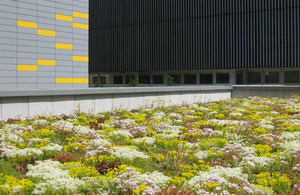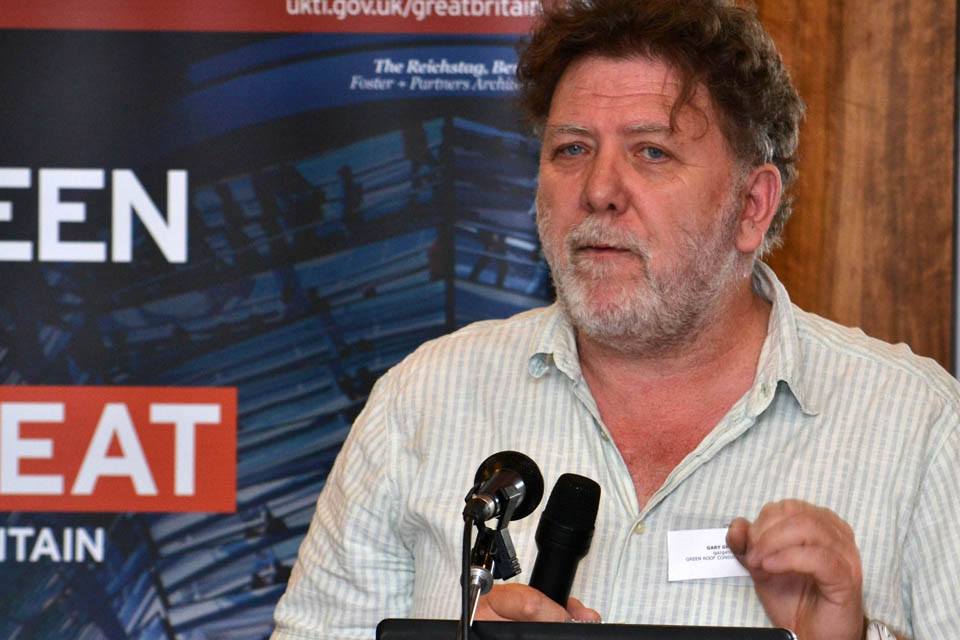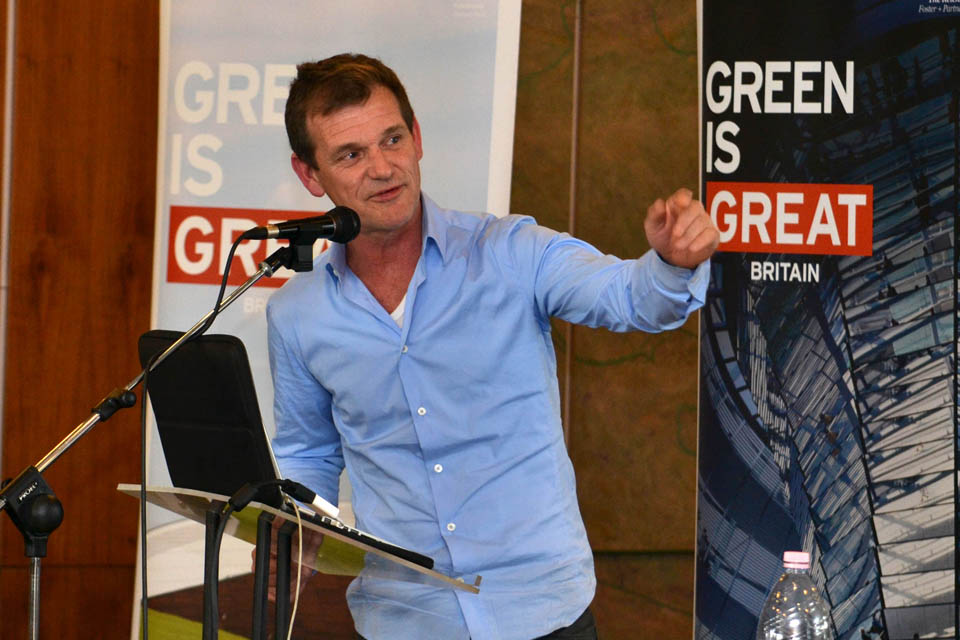Let nature back into our cities - Green Cities conference in Budapest
Extending green surfaces within urban areas has a major untapped economic potential, British presenters argued at the "Green Cities, Green Infrastructure" conference on 3 April in Budapest. The event, which brought together British, Austrian and Hungarian experts, was organised by the Hungarian National Association for Green Roofing ZÉOSZ, and co-funded by the British Embassy.

Green Roofs in an urban environment, Source: ZÉOSZ
Urbanisation has gone so far in the past decades that we are actually bothered by nature when it shows itself to us, explained ZÉOSZ President Péter Dezsényi, evoking the common experience that once a city dweller moves to the countryside, the loud chirping of birds often troubles their sleep in the early morning. It is time to let nature back into the human habitat, and not only because of the aesthetics: green surfaces are the cure to a range of pressing problems in the city.
Positive economic effects of green infrastructure and green roofs
“Urban greening can tackle air and water pollution, improve buildings’ thermal performance, provide noise insulation and bring down the heat: positive changes that can lead to clear financial benefits”, Gary Grant, the Director of Green Roof Consultancy pointed out. The amount of money that can be spared in air conditioning this way is significant: if 10% of London’s roofs were “greened”, their cooling effect would adequately counter the “urban heat island” problem, the increased temperature of a built-up area compared to its rural surroundings. Also, cultivating a natural vegetation on roofs can help capturing rainfall and alleviate the burden on old drainage systems, which are unable to channel the excess water of summer storms in many European capitals.

Gary Grant, Director of Green Roof Consultancy Ltd.
However, building green infrastructure is not about the colour green, Dusty Gedge, President of the European Federation of Green Roof Associations EFB recalled. “What matters is the ecological function of the area. The point is not to create tidy green grass islands in the city, but ones that contribute to urban life: we must make resilient landscapes that hold water and can accommodate indigenous vegetation.” He drew attention to the European Commission’s Green Infrastructure Strategy, which put forward specific plans for developing the network of natural land and water that lies within and between cities, towns and villages.

Dusty Gedge, President of European Federation of Green Roof Associations, presenting at Green Cities Conference in Budapest
Britain supports new ideas to tackle climate change
The UK government has been dedicated to combating the negative effects of climate change since 2004, and it has been promoting the development of green infrastructure. In October 2011, the Mayor of London published a “Climate Change Adaptation Strategy” which engaged the British capital in an intensive urban greening programme. Since then, 200,000 m2 of new green roofs were created in London.
One major project at the Rubens at the Palace Hotel saw the construction of “London’s largest living wall”, which is irrigated using rainwater collected from the roof. According to Gary Grant, who designed the system, twenty interventions of this kind would solve the surface flooding problems of London’s Victoria district.
Our work
The “Green Cities, Green Infrastructure” conference provided Hungarian policymakers, scientists, and professionals of the local green industry with an excellent opportunity to meet their international counterparts and lay down the basis for future cooperation. The British Embassy is working to create the connections, which will enable experts from Hungary and Britain to familiarise themselves with each others’ work and, drawing on their mutual experience, to embark on successful common projects. Together with UK Trade & Investment our aim is to generate business opportunities for British and Hungarian companies.
Find out more:
-
In December 2006, the Code for Sustainable Homes introduced a range of sustainability measures with the goal of making every home ‘zero carbon’ from 2016.
-
livingroofs.org is an independent organization that promotes green roofs and living roofs in the UK and is the UK member of the European Federation of Green Roof Associations.
-
European Federation of Green Roof Associations EFB
-
Hungarian National Association for Green Roofing Zöldtető- és Zöldfal Építők Országos Szövetsége, ZÉOSZ Climate Week is Britain’s biggest climate change campaign, inspiring a new wave of action to create a sustainable future and showcases practical solutions from every sector of society.
-
The UK Green Building Council is a charity and membership organisation, which facilitates dialogue between industry and Government to promote greener approaches in the construction sector.
-
The UK considers the objective of improving the global economic environment as one of its main priorities for which aim it urges international cooperation.